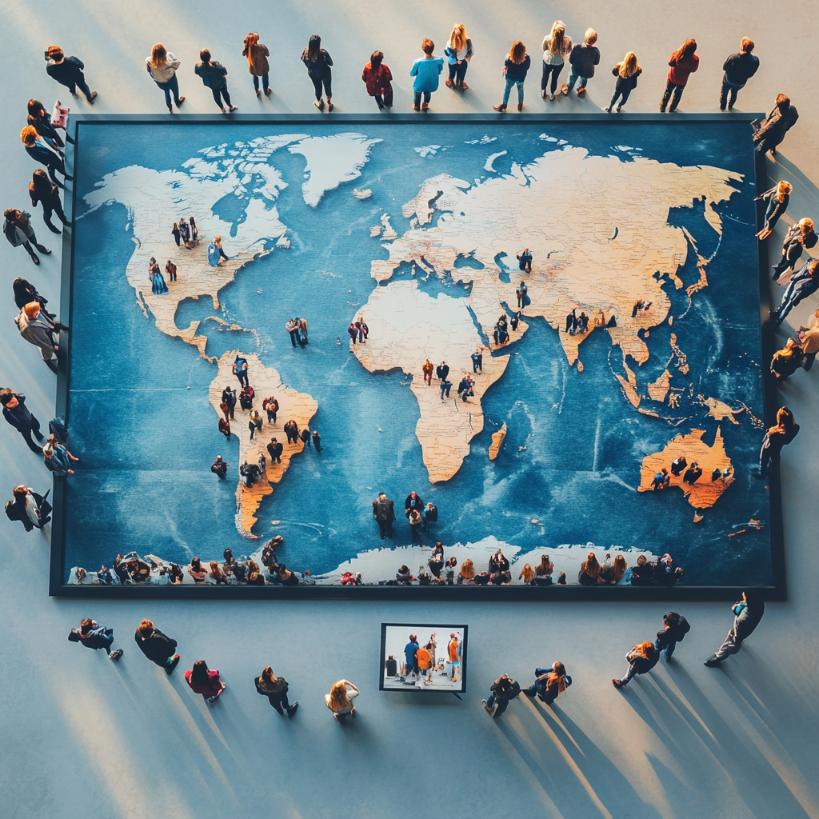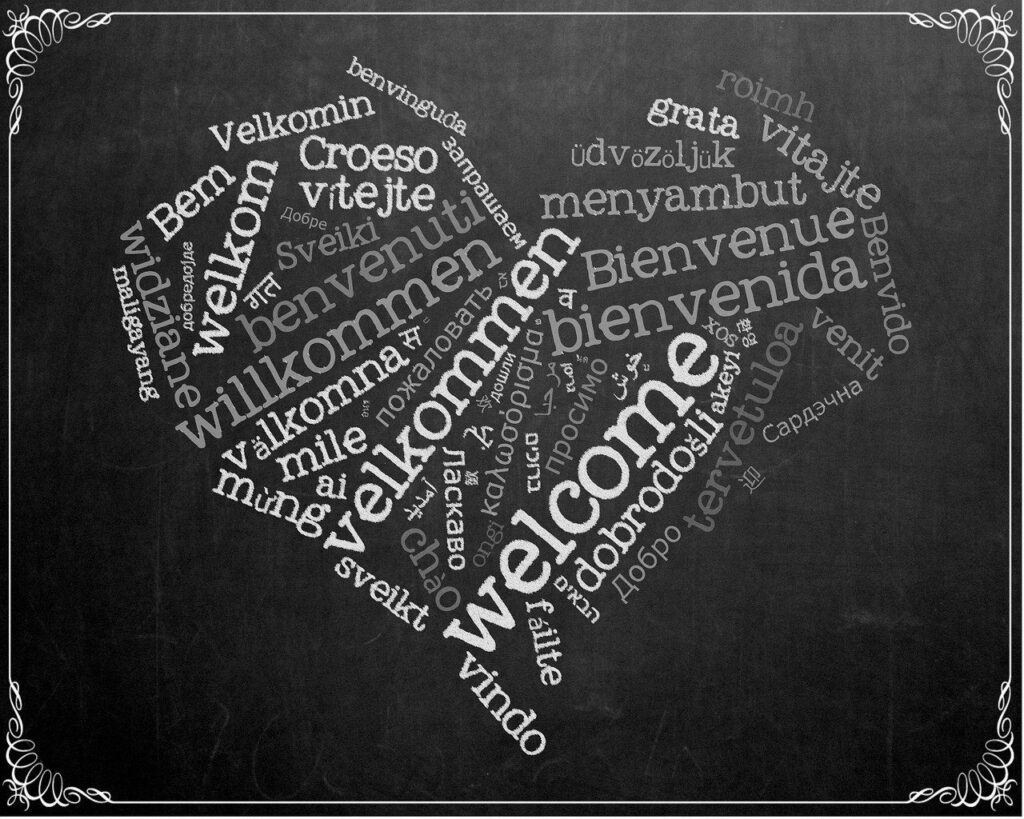Translation and Localization Services: The Key to Expanding Your Global Reach
Introduction
Translation and localization services are crucial tools for businesses and content creators aiming to reach international audiences. While both terms are often used interchangeably, they serve different functions. Translation refers to the process of converting text or speech from one language to another, ensuring that the meaning remains accurate and understandable in the target language. Localization, on the other hand, goes beyond just language conversion—it involves adapting content to fit the cultural, social, and even technical nuances of a specific region. This might include adjusting visuals, idiomatic expressions, date formats, or even humor to resonate with the target audience.
For businesses and content creators looking to expand globally, these services are essential. Language is a primary barrier when it comes to entering new markets, and simple word-for-word translation often isn’t enough. Localizing content allows companies and creators to tailor their messages to the cultural preferences of each region, ensuring that the content feels familiar and relevant to the audience. This is especially important when dealing with marketing materials, websites, apps, or videos, where the tone and context can drastically affect how the message is perceived.
Professional translation and localization services are designed to go beyond surface-level language conversion. They ensure that your content maintains its original intent and emotion while being adapted to fit the local culture. This level of accuracy and cultural sensitivity is crucial for avoiding miscommunications, enhancing viewer or customer engagement, and ultimately building trust with international audiences. By investing in these services, businesses and content creators can position themselves as global entities, capable of connecting meaningfully with diverse audiences around the world.
The Importance of Translation and Localization Services
Breaking Language Barriers
Translation services are a critical component for businesses and content creators looking to communicate effectively with audiences in different languages. By converting text or speech from one language to another, translation ensures that messages are understood by diverse audiences across the globe. This is essential for businesses expanding into international markets, where the ability to convey product information, marketing messages, or even customer service in the local language can make or break success. Content creators, too, can use translation to broaden their reach, allowing their work to be accessed and appreciated by viewers who speak different languages. Whether through translated subtitles, captions, or website content, breaking the language barrier is the first step toward truly global engagement.
Cultural Adaptation
While translation is important, it’s only part of the equation. Localization plays an equally vital role in making content not just understandable but also culturally relevant to each specific region. Localization involves adapting everything from language nuances to visuals, symbols, and even humor to align with the cultural norms of the target audience. For example, a marketing campaign that resonates with customers in the U.S. may need significant adjustments to connect with audiences in Asia or the Middle East, where cultural values and communication styles differ. Localization ensures that the content feels familiar and appropriate to the local audience, whether it’s adjusting idiomatic expressions or modifying visuals and colors to align with local preferences.
Without localization, content might seem foreign or out of touch, even if it’s technically translated correctly. Localization ensures that businesses and creators can truly connect with their audience, offering content that feels as if it were made specifically for them.
Building Trust with Global Audiences
Translation and localization services are not just about making content accessible; they are also about building trust and credibility with global audiences. When businesses or creators invest in high-quality localization, it shows their commitment to understanding and respecting the cultural and linguistic differences of their target audience. This level of attention fosters a sense of loyalty and connection, as customers feel that the content speaks directly to them in a culturally sensitive and authentic way.
Trust is essential in both consumer and creative spaces. When audiences see that a business or creator has taken the time to tailor content for their region, they are more likely to engage with it and form a positive perception of the brand or individual. Over time, this can lead to stronger relationships, brand loyalty, and increased credibility in the international market. Professional translation and localization services ensure that your message is not only understood but also resonates, helping to solidify your brand’s global presence.
Key Elements of Translation and Localization Services
Language Translation
The foundation of any translation and localization effort is language translation, which involves adapting written or spoken content from one language to another. This process ensures that the core message is accurately conveyed to audiences who speak different languages. High-quality translation goes beyond literal word-for-word conversion; it captures the tone, intent, and nuances of the original content. Whether it’s translating a website, product descriptions, social media posts, or customer communications, accurate language translation is crucial for businesses and content creators to ensure their message is clear and resonates with global audiences.
Cultural Localization
Cultural localization goes beyond basic translation by adapting content to fit the cultural norms, values, and expectations of a specific region. This includes adjusting idiomatic expressions, humor, and even references that may not be understood or appreciated by a different culture. For example, a marketing campaign that works well in Western countries may need to be reworked to avoid offensive or confusing cultural references in other parts of the world. Localization also involves modifying visual elements, such as colors, symbols, and images, to align with the local cultural preferences. This step ensures that content not only speaks the local language but also feels relevant and respectful to the target audience.
Technical Localization
Technical localization focuses on adapting software, websites, or products to function smoothly in different languages and regions. This could involve modifying a website’s interface to accommodate right-to-left reading for languages like Arabic, or ensuring that software supports regional date and time formats, currency symbols, and units of measurement. Technical localization also accounts for the different ways users in various regions interact with digital platforms, requiring adjustments to user interface design, functionality, and user experience. This is especially important for businesses that sell digital products or services globally, as seamless localization helps ensure a consistent and user-friendly experience regardless of location.
Multimedia Localization
In today’s multimedia-driven world, multimedia localization is essential for adapting videos, audio, and graphics to meet the preferences of local audiences. This includes translating video scripts, adding subtitles in multiple languages, or dubbing voiceovers with native speakers. For content creators, localizing multimedia ensures that visual and audio elements remain engaging and understandable, making the content accessible and appealing to audiences across regions. Whether it’s modifying the visual style of a video to better align with cultural preferences or localizing audio to match the linguistic and emotional tone of the target language, multimedia localization plays a key role in enhancing audience engagement and ensuring content resonates globally.
Challenges of Translation and Localization
Maintaining Accuracy and Meaning
One of the most significant challenges in translation and localization is maintaining accuracy and meaning across different languages. While direct translations can convey the literal words, they often fail to capture the context, tone, and cultural nuances embedded in the original content. Mistranslations or misinterpretations can alter the meaning entirely, leading to confusion or even miscommunication with the target audience. This is especially problematic when dealing with idiomatic expressions, slang, or technical jargon that may not have a direct equivalent in the target language. To address this, it’s essential to work with professional translators who understand not only the language but also the context in which the content is being used. Properly maintaining accuracy requires a deep understanding of both the source and target languages and cultures, ensuring that the original message is preserved in its entirety.
Ensuring Cultural Sensitivity
Another critical challenge is ensuring cultural sensitivity when localizing content. While translation focuses on language, localization involves adapting content to fit the cultural norms and values of the target audience. However, cultural missteps—such as using inappropriate symbols, colors, or references—can easily alienate or offend the very audience you are trying to engage. For example, gestures, humor, or even visual imagery that is acceptable in one region may carry a negative or offensive meaning in another. Navigating these differences requires careful research and collaboration with local experts who understand the cultural intricacies of the target region. Ensuring cultural sensitivity is not just about avoiding mistakes; it’s about creating content that feels familiar and respectful, helping to build trust with international audiences.
Managing Costs
Managing costs is a common challenge for businesses and content creators when localizing content for multiple regions. High-quality translation and localization services require skilled professionals—translators, cultural consultants, and technical experts—whose expertise can be costly, especially for projects targeting several languages and regions. Balancing the need for quality with budget constraints can be difficult, particularly for smaller businesses or independent creators. While automated tools and AI-driven translation services can reduce costs, they may sacrifice the accuracy and cultural nuance necessary for effective localization. To manage costs effectively, businesses should consider prioritizing key markets or languages for initial localization efforts and gradually expanding as their global reach grows. Another option is to utilize a hybrid approach, combining machine translation for basic tasks with professional human oversight to ensure quality and accuracy.
Best Practices for Using Translation and Localization Services
Choose Professional Translators and Localization Experts with Experience in the Target Language and Culture
When it comes to translation and localization, the quality of the end result largely depends on the expertise of the professionals involved. It’s essential to work with experienced translators and localization experts who are not only fluent in the target language but also deeply familiar with the cultural nuances of the region. Native speakers with a strong understanding of the local customs, values, and communication styles are better equipped to capture the essence of the original content and ensure that it resonates with the local audience. Choosing professionals with this level of expertise minimizes the risk of errors, mistranslations, or cultural missteps that could undermine the effectiveness of the content.
Ensure that Localization Includes Both Language and Cultural Adaptation to Maintain Authenticity
Translation alone is not enough when engaging a global audience. To make your content truly relevant and engaging, localization should go beyond language to include cultural adaptation. This means adjusting not just words but also imagery, symbols, and even messaging to align with local customs, values, and preferences. For example, marketing slogans, visuals, or references that are effective in one region may need to be altered to avoid confusion or offense in another. Ensuring that localization includes both linguistic and cultural adaptations helps maintain the authenticity of your content, making it feel familiar and accessible to the audience. This balance between translation and cultural adaptation is key to producing content that resonates and connects with international markets.
Use Translation Management Tools to Streamline the Process and Improve Efficiency
For businesses and content creators managing large-scale localization projects, using translation management tools can significantly streamline the process and improve efficiency. Platforms like Smartling, SDL Trados, or Memsource allow you to manage translations across multiple languages, track progress, and collaborate with translators more effectively. These tools help automate workflows, store glossaries for consistent terminology, and enable the reuse of previously translated content, saving both time and money. By centralizing the translation and localization process, these tools ensure consistency across different versions of the content while reducing the potential for human error. This is especially helpful for companies working on multilingual websites, software, or global marketing campaigns.
Test Localized Content with Native Speakers Before Launching to Ensure Accuracy and Cultural Fit
Before launching any localized content, it’s crucial to test it with native speakers from the target audience. This step helps ensure that the translations are accurate, the cultural adaptations are appropriate, and the overall content resonates as intended. Native speakers can offer feedback on whether the tone, language, and visuals feel natural and engaging or if any adjustments are needed. Testing localized content with locals provides valuable insights that may not be obvious during the translation process, allowing businesses to make final tweaks before the content goes live. This approach reduces the risk of miscommunication, helps refine the content’s cultural fit, and ultimately leads to a more successful launch in new regions.
Conclusion
Translation and localization services are invaluable for businesses and content creators aiming to expand their global reach. By breaking language barriers and ensuring cultural adaptation, these services allow you to connect more deeply with international audiences, build trust, and create content that resonates on a local level. Whether it’s a website, app, marketing campaign, or multimedia content like a multilingual video, professional localization ensures that your message is understood and appreciated by diverse markets. Investing in translation and localization services guarantees that your content maintains its authenticity and relevance across cultures, helping you grow your global audience and strengthen your brand presence.
For those working with multimedia content, such as videos, it’s important to consider specialized video translation services that ensure both spoken dialogue and visual elements are accurately adapted for different languages and regions. High-quality localization services can make the difference between a video that feels foreign and one that engages and connects with viewers, no matter where they are.
To ensure your business or creative content is effectively localized, consider working with experts like Mosaico Productions. We offer tailored translation and localization solutions, including video translation services and multilingual video production, to help you create content that speaks to your target audience in a culturally relevant and impactful way. Contact us today to learn more about how we can help you expand globally!




